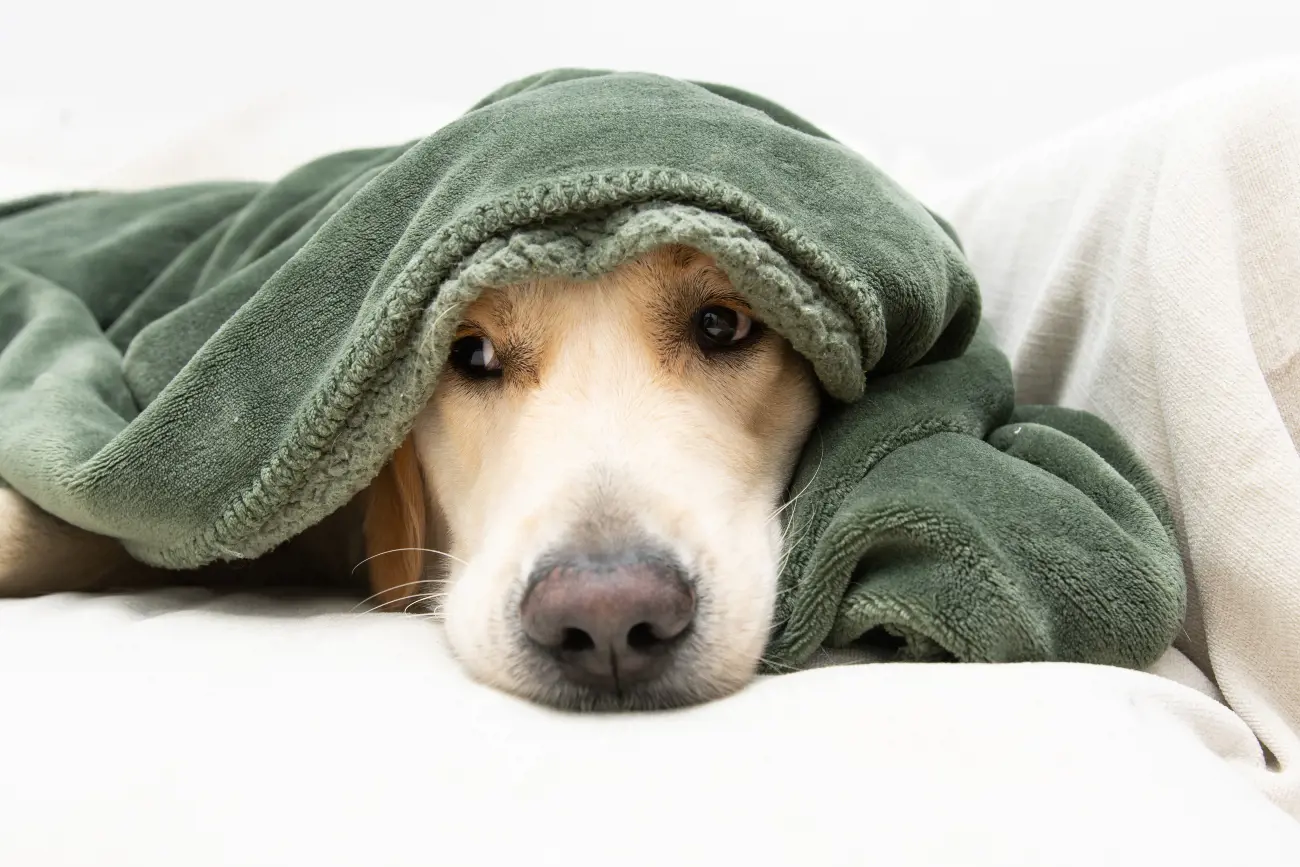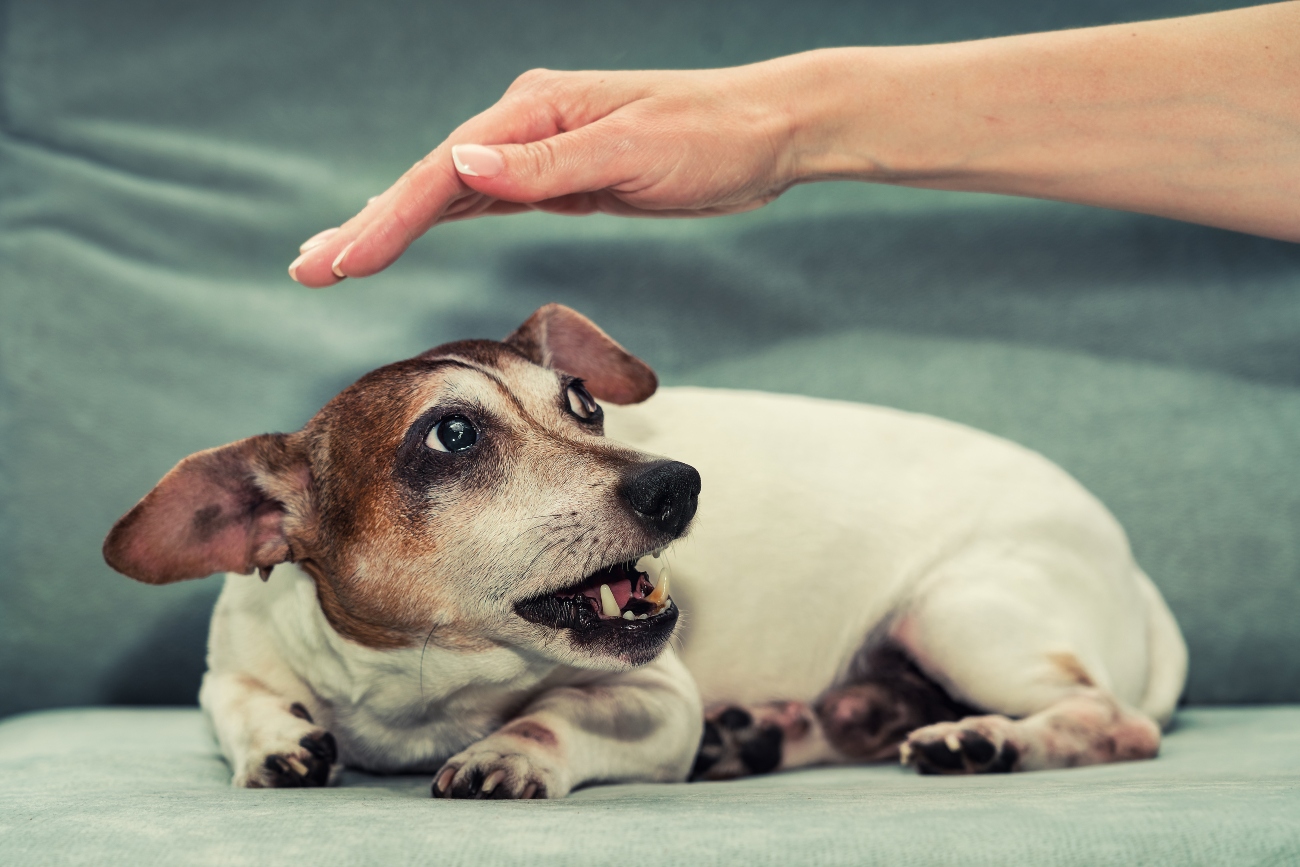The healing stages of a dog wound
23rd January, 2024

As a pet parent, understanding the healing stages of a dog wound is essential in providing the best care for your pup during their recovery period.
The process begins with the inflammation stage, where the body's immune response kicks in to limit blood loss and kill harmful bacteria. Next is the debridement stage, where white blood cells help remove dead tissue and debris from the wound.
The repair stage follows, where new tissues are built. Collagen, a protein that supports healing, is produced at this stage. Lastly, the maturation stage occurs, where the wound fully closes, and the new tissue strengthens.
Understanding dog wounds
Dog wounds come in various shapes and sizes, and can be either open, like cuts and grazes, or closed, such as contusions or bruises. Despite the severity or type of wound, it’s crucial to provide immediate care and attention to prevent complications such as severe infections.
Remember, when in doubt, always consult a veterinarian. Timely professional intervention can significantly reduce your dog's pain and potential medical costs.
The four healing stages of a dog wound

A dog's wound healing process typically involves four stages:
- Inflammation
- Debridement
- Repair
- Maturation
Each stage plays a distinct role in your dog's recovery, and understanding them will equip you better to monitor the healing process.
Stage 1: Inflammation
The initial response to an injury is inflammation, which occurs almost instantaneously after the wound is inflicted. This stage involves the body’s natural instinct to protect itself by slowing the blood flow and activating the immune system.
During inflammation, you might notice:
- Swelling
- Pain
- Redness
- Heat
- Immobility or loss of function
These symptoms are part of the body’s equivalent of calling for backup. Just like how emergency services rush to the scene of a fire, the body sends an influx of blood and immune cells to the affected area.
Potential concerns during the inflammation stage
While inflammation is a normal part of the healing process, excessive bleeding or persistent high fever could indicate complications. Unusual symptoms such as red streaks around the wound, a foul odour, or an unusually high temperature could be signs of an infected wound. If these symptoms are present on your dog's body, consult your vet immediately.
Stage 2: Debridement
Debridement follows inflammation and is the body's way of cleansing the wound. During this phase, dead tissues and cells, along with bacteria, are purged from the wound.
Debridement can be classified into two types:
- Selective debridement: This involves the removal of damaged tissue without harming the remaining healthy tissue.
- Non-selective debridement: This process involves the indiscriminate removal of both healthy and unhealthy tissues.
Potential concerns during the debridement stage
If you notice blackened areas around your dog's wound, consult your vet immediately. These areas indicate dead tissue that needs to be surgically removed. Delay in removing this unhealthy tissue can hinder the healing process.
Stage 3: Repair

The third stage, repair, begins a few days after the initial injury. During this stage, the wound starts to heal and there's less noticeable activity compared to the inflammation and debridement stages.
Primary intention healing
If the wound resulted from a surgical incision, the healing process will be more straightforward. The skin on either side will grow and fuse together over the incision, accelerating the healing stages.
Secondary intention healing
This type of healing occurs when the wound cannot be closed with sutures or simple surgery. The damaged area could be too wide or too infected to be sealed safely. In these instances, the wound heals by building layer upon layer of new tissue from the base upwards.
Potential concerns during the repair stage
If your dog has reached this stage without any major complications, the wound should be kept clean and moist to encourage the new layers of skin to develop. Use a non-toxic antimicrobial cleaning spray, preferably three to four times daily.
Stage 4: Maturation
The fourth and final stage, maturation, involves the strengthening and scarring of the wound. At this stage, the wound is almost entirely covered in new tissue.
Potential concerns during the maturation stage
Scar tissue can be itchy and may cause discomfort to your dog. Ensuring the new skin is kept moist can help reduce dryness and the itchy sensation.
Home care for dog wound healing
Adequate home care is essential in the healing stages of a dog wound. Here are some general guidelines to follow:
- Clean the wound and surrounding area daily to remove debris.
- Administer all prescribed medications.
- Prevent your dog from licking the wound.
- Prevent premature wound closure by gently massaging the surrounding skin.
- Use warm tap water or a pet-safe antiseptic solution to clean the wound.
- Monitor the wound for signs of infection.
If you notice any unusual symptoms or if the wound seems to be healing slowly, consult your vet immediately.
When to seek veterinary help
Certain dog's wounds require immediate veterinary attention or a emergency animal hospital, including those with large objects lodged in them, injuries around the head or eyes, skin torn away from the flesh, animal bites, and wounds caused by severe trauma.
Dog insurance considerations
If you're looking to ensure the health and safety of your pet in the long run, consider getting a dog insurance quote for your furry friend. This will provide you with peace of mind, knowing you are covered for any unexpected medical expenses.
Disclaimer: Purely Pets dog insurance does not cover pre-existing medical conditions.
You can get a quote through our website by clicking here. Alternatively, if you'd like to speak to one of our dog insurance specialists, you can reach us on 0330 102 5748.
Speeding up the dog wound healing stages
While the body has its own healing process, there are ways to expedite the healing stages of a dog wound care. Regular cleaning, administering prescribed medications, and preventing the dog from licking the wound can all contribute to a faster recovery.
Understanding the healing stages of a dog wound can help ensure successful recovery for your furry friend. By knowing what to expect, you can provide the best care for your pet and take prompt action if complications arise.
Frequently asked questions
What does a healing dog wound look like?
Wound management is important in assessing if the initial wound is healing properly. Initially, you may notice a red, inflamed area which is a sign of your dog's body fighting off bacteria. Over time, the wound will start to dry out and a scab will form.
This is a good sign, indicating that the healing process is underway. The scab slowly starts to fade into a lighter colour, and the surrounding area becomes less swollen. The hair around the wound also begins to grow back.
How do you know when a dog is healing?
Knowing when your beloved furry friend is on the mend can sometimes be a guessing game. However, there are several signs that can help you understand how your dog's injury is healing.
One of the most common indications is an improvement in their overall behaviour and energy levels. If your dog is playing, eating, and sleeping normally, these are positive signs. A decrease in symptoms like limping, whining, or signs of pain can also indicate recovery.
Furthermore, if your dog had a wound or surgery, a decrease in redness, swelling, or discharge can also signify healing. Remember, while these signs are encouraging, always consult with your vet to ensure your dog's health is improving satisfactorily.
How long does it take for a dog to heal a wound?
Wound healing varies depending on the severity and type of the dog's injury, and can range from a few days to several weeks. Minor scrapes may heal within a week, while more serious wounds could take a month or longer. This process can be expedited with appropriate veterinary care, clean environment, and lots of love.
Does a dog wound heal faster covered or uncovered?
Generally, a dog wound may heal better when covered as it can prevent the dog from licking or biting the wound site on the dog's skin, which can slow down the healing process or even cause further damage. However, it's crucial to ensure the initial wound is clean before covering it. Remember, consulting with a vet is always the best course of action when dealing with injuries.
How do I know if my dog has allergies?
Just like their human counterparts, dogs can also experience allergies.The most common signs include constant itching and scratching, red and watery eyes, sneezing, vomiting, or diarrhea. You might also notice that your furry friend is constantly licking or chewing their paws.
An unusual amount of snoring could also indicate that your dog is dealing with allergies. If you notice any of these symptoms persisting, it's important to take your dog to the vet for a proper diagnosis.
Why might my dog seem depressed?
Just like humans, dogs can also experience bouts of depression. You might notice your dog is less energetic, showing decreased interest in playtime, eating less, and sleeping more.
Several reasons could be behind this change in behaviour. They might be feeling unwell physically, experiencing a major life change such as moving homes or losing a companion, or they could be picking up on stress or sadness from their human family. It's essential to pay close attention to these signs and consult with a vet to ensure your pup gets the help they need.
Helpful Pages
Recent Posts
Pet Insurance Quote
- 98% claims paid *
- Claims paid directly to vets
- 24/7 vet video consultations
- Interest free monthly payments




